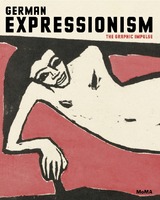German Expressionism : the graphic impulse
Date
1920Author
Peter Jelavich, Starr Figura, Heather Hess, Starr Figura
Metadata
Show full item recordAbstract
The artists associated with German Expressionism in the early decades of the twentieth century took up printmaking with a dedication and fervor virtually unparalleled in the history of the genre. The woodcut, with its coarse gouges and jagged lines, is the preeminent Expressionist medium, but the movement also revolutionized etching and lithography, to alternately vibrant and stark effect. This graphic impulse can be traced from the formation of the artist group Die Brücke in 1905 through the war years of the 1910s and into the early 1930s, when individual artists continued to produce compelling work even as the movement was winding down. This volume, published in conjunction with an exhibition at The Museum of Modern Art, showcases the Museum's outstanding holdings of Expressionist prints, enhanced by a selection of drawings, paintings, and sculptures from the collection. Featuring approximately 260 works by some 30 artists, the book presents a diverse array of individuals, including Max Beckmann, Erich Heckel, Ernst Ludwig Kirchner, Emil Nolde, Vasily Kandinsky and Oskar Kokoschka. Essays by Starr Figura, Associate Curator of Prints and Illustrated Books at MoMA, and Peter Jelavich, Professor of History, Johns Hopkins University, discuss the centrality of printmaking in German Expressionism and provide a sociocultural backdrop for the movement
Collections
- Libgen [81666]

